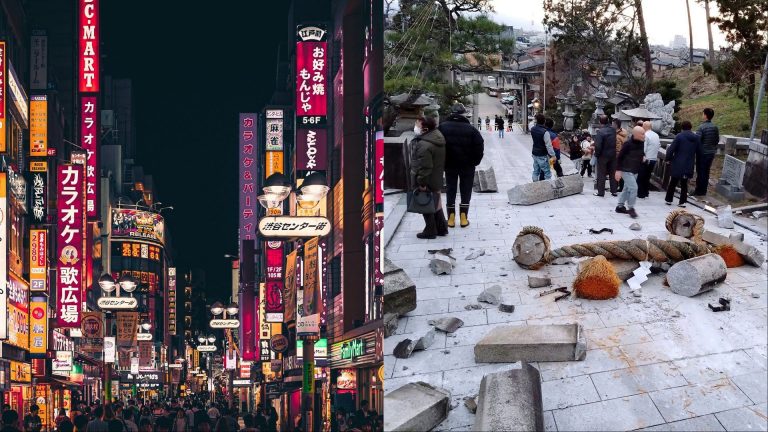Japan was hit by a 7.6-magnitude earthquake on Monday afternoon, January 1, 2024, on the Noto Peninsula in Ishikawa Prefecture. Authorities ordered residents to evacuate affected coastal areas as buildings collapsed, sparking fires and issuing tsunami warnings.
According to public broadcaster NHK, there have been an overwhelming number of requests for assistance in the affected area. Kyodo News reported that there are fears that at least two people have been killed, and that number could rise in the coming days.
On social media, many prayed for the safety of those affected by the sudden earthquake. Under a @NHKWORLD_News post on the same topic, someone commented:
Prime Minister Fumio Kishida urged residents to be vigilant in anticipation of more tremors.
A massive earthquake strikes western Japan, prompting tsunami warnings
The 7.5-magnitude earthquake occurred at 4:10 p.m. local time at a depth of 6 miles on the Noto Peninsula in Ishikawa Prefecture. Following the tremors, the Japan Meteorological Agency issued a tsunami warning along coastal prefectures of Ishikawa, Niigata and Toyama. The first waves to hit the coast were reported just over 10 minutes later. Russia also issued tsunami warnings for Vladivostok and Nakhodka as a precaution.
According to public broadcaster NHK, the city of Wajima in Ishikawa Prefecture experienced tsunami waves about 1.2 meters (3.9 feet) high at around 4:21 p.m. The earthquake led to the issuance of warnings about the evacuation of residents and the disruption of flights and railway services in the affected area, according to the BBC.
More than 36,000 homes were without power in Ishikawa and Toyama prefectures, according to Hokuriku Electric Power Company. NHK footage showed a building collapsing in the coastal city of Suzu, while Kanazawa residents sought to protect themselves under tables during the tremors. Defense Minister Minoru Kihara told NHK that the Defense Ministry had sent 1,000 soldiers to help rescue people trapped under the rubble.
Prime Minister Fumio Kishida urged local residents to stay safe and evacuate areas where the tsunami is expected to occur immediately. Japan is located on the Pacific Ring of Fire, a belt of seismic activity, so earthquakes and tsunamis are common in the country.
Over the past century, the country has made its buildings among the most earthquake-resistant in the world. Infrastructure is able to withstand major earthquakes and remain functional even in their immediate aftermath.
Netizens raised concerns online about the sudden earthquake:
Officials in Ishikawa reported receiving an overwhelming number of distress calls, according to public broadcaster NHK. A fire station in Wajima City said it received more than 50 phone calls from people about collapsed houses.
Some of the people reported to be trapped were unconscious, and one caller said an office building had collapsed, according to the New York Times. The Japanese press did not officially announce the death toll. However, officials said the number so far could range from two to six, with a significant increase likely in the following days.
The Prime Minister posted several tweets urging people to reach higher ground and remain vigilant in anticipation of aftershocks and earthquakes.
The South Korea Meteorological Administration also took measures to warn of a possible tsunami. The organization has been monitoring possible sea level changes in the east coast areas of Gangneung, Yangyang and Gosong in Gangwon Province and the city of Pohang, according to CNN.

